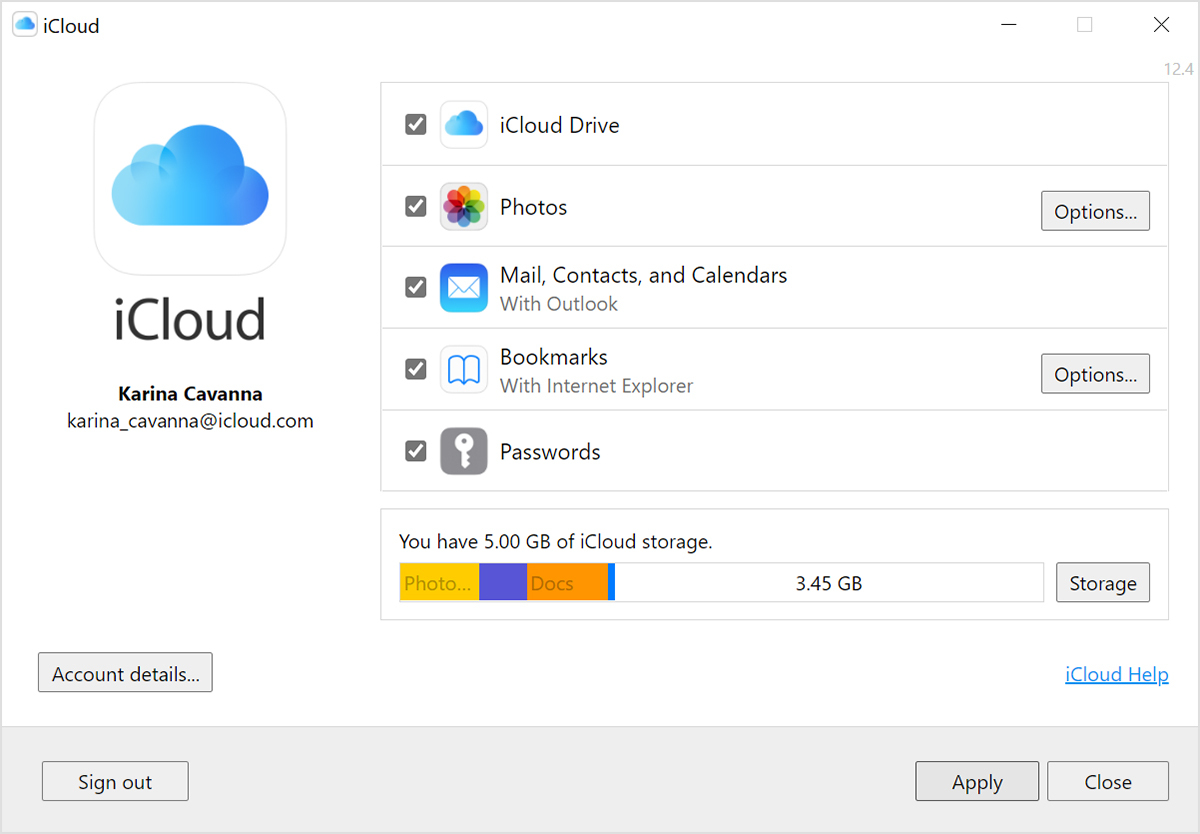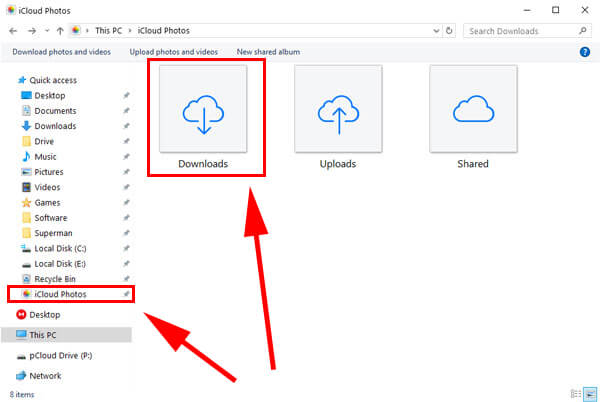

- #DOWNLOADING FILES FROM ICLOUD FOR WINDOWS TO A MAC FOR MAC#
- #DOWNLOADING FILES FROM ICLOUD FOR WINDOWS TO A MAC PC#
- #DOWNLOADING FILES FROM ICLOUD FOR WINDOWS TO A MAC DOWNLOAD#
- #DOWNLOADING FILES FROM ICLOUD FOR WINDOWS TO A MAC FREE#
Step 5: Click Delete again on the confirmation pop-up box to remove the iCloud backup. Step 4: Select the backup that you want to delete, and then click Delete. Step 3: Click the side-tab labeled Backups. Step 2: Click the button labeled Storage next to the iCloud Storage indicator. Step 1: Click the iCloud icon on the taskbar, and then click Open iCloud Settings to open the iCloud app. However, installing the app via the Microsoft Store is not only convenient, but it’s also a much-improved version of iCloud with fewer issues and enhanced functionality. If you don’t have it installed, you can get it either via the Apple website or the Microsoft Store. On Windows, you can delete iCloud backups for your iPhone or iPad via the iCloud app for Windows. Once you are done, exit the System Preferences application. Repeat for any other backups that you want to delete. Step 5: Select the backup that you want to delete, and then click the tiny Delete icon as shown within the screenshot below.

Step 4: Click the side-tab labeled Backups. Step 3: Click the Manage button next to the iCloud Storage indicator. Note: On macOS Mojave and older, click iCloud instead. After you have that downloaded and installed, you can turn on iCloud to start syncing: Open the iCloud for Windows app. Step 3: Select the backup that you want to remove, and then tap Delete. Step 2: Tap Manage Storage under the iCloud Storage indicator. Thats what I tried to do drag a folder from the iCloud Drive page in my browser to the iCloud Drive folder. Step 1: Tap your profile within the iPhone/iPad Settings app. If you did upload a folder of music, then opening the iCloud Drive folder in Windows Explorer should let you drag the folder out of iCloud drive and into a different folder on your PC. On the iPhone and iPad, you can easily remove iCloud backups for any of your devices using the iPhone/iPad Settings app. You must manually enable iCloud backups on the device to resume using the service. That means it will no longer take a backup automatically to iCloud when connected to a power source. Also, you can also configure as to what gets backed up when performing an iCloud backup, which lets you drastically reduce the storage used by iCloud backups in the first place - do read our guide to freeing up iCloud storage for more details.įinally, deleting a backup from iCloud will automatically turn off iCloud backups for the particular device - if you still use the device.
#DOWNLOADING FILES FROM ICLOUD FOR WINDOWS TO A MAC FREE#
However, there are also other ways to free up iCloud storage, which include deleting unwanted photos, alternate photo backup services, turning off unwanted apps from using iCloud, etc.
#DOWNLOADING FILES FROM ICLOUD FOR WINDOWS TO A MAC PC#
You can also delete iCloud backups for any current devices provided that you are backing them to a PC or Mac using iTunes - or via Finder on macOS Catalina. For example, it might be a backup related to a device that you used ages ago, in which case it’s just residing within iCloud taking up valuable space. That said, you can still delete them safely if you are sure that you do not need them. You can also set up new devices using older backups - if you lose your iPhone or iPad, for example. That lets you easily restore data backups on your devices in the event of data corruption, which makes having them around quite important.
#DOWNLOADING FILES FROM ICLOUD FOR WINDOWS TO A MAC DOWNLOAD#
You can use them to upload and download files to and from the cloud.ICloud backups of your iOS or iPadOS devices contain important information such as app data, device settings, messages, etc. Folders for iCloud, Dropbox, or Google Drive are available in the Favorites section (or Quick Access section in Windows 10).
#DOWNLOADING FILES FROM ICLOUD FOR WINDOWS TO A MAC FOR MAC#
Note: In Parallels Desktop for Mac Pro Edition, you can also share your Dropbox for Business, Box and OneDrive for Business folders with Windows. To share macOS iCloud, Dropbox, or Google Drive folders with Windows, do the following: To be able to use this functionality, Parallels Tools must be installed. This functionality is also available for Linux virtual machines.Ģ.

Once sharing is enabled, you can upload, download, and sync files from any of these services from within Windows without duplicating any of their files on your hard disk.ġ. If you're using iCloud, Dropbox, or Google Drive cloud storage in macOS, you can easily share their macOS folders with Windows. Share iCloud, Dropbox, or Google Drive Folders with Windows Share iCloud, Dropbox, or Google Drive Folders with Windows


 0 kommentar(er)
0 kommentar(er)
